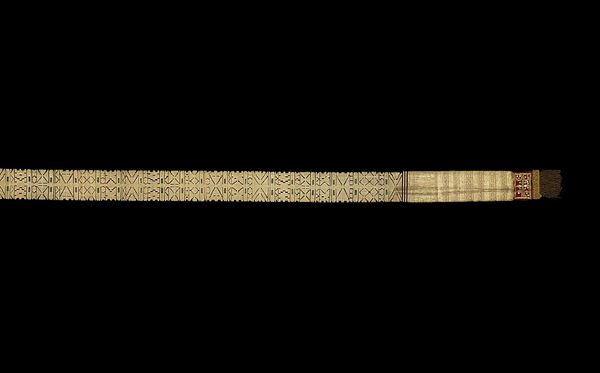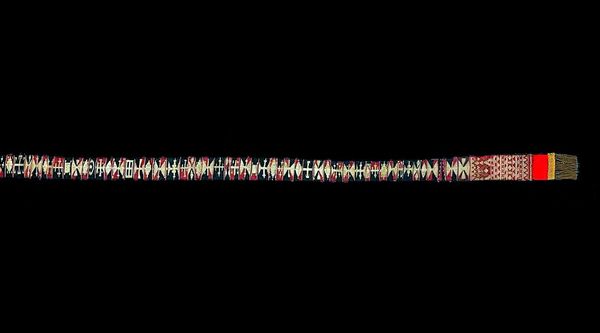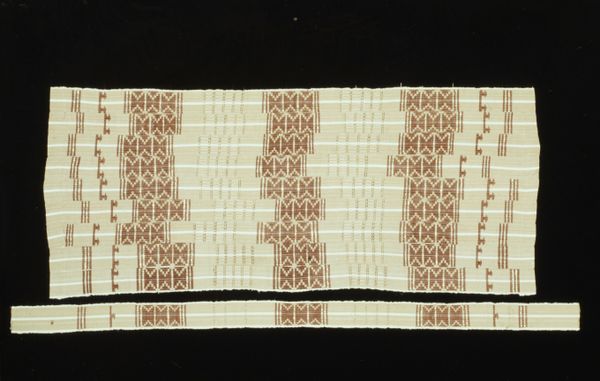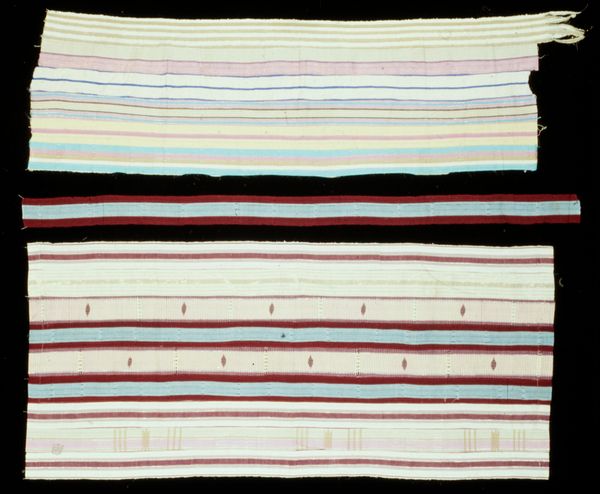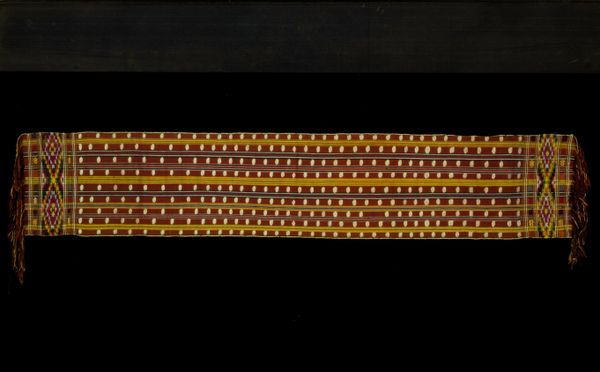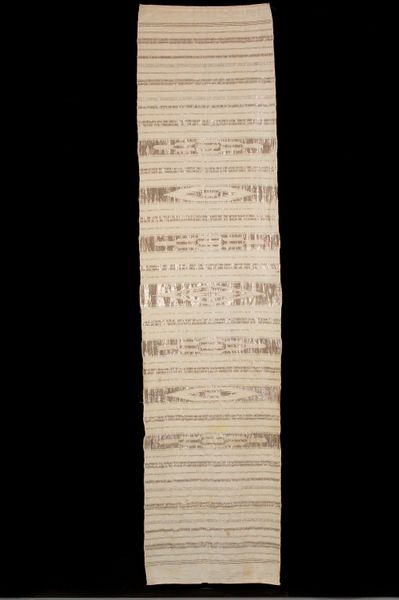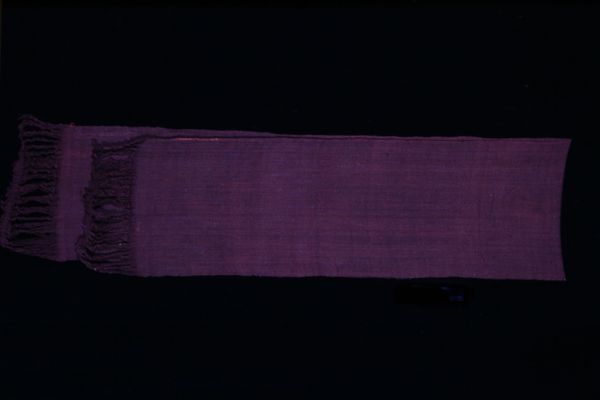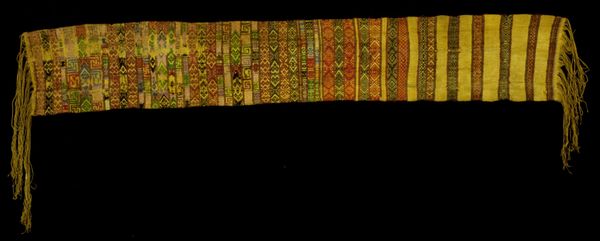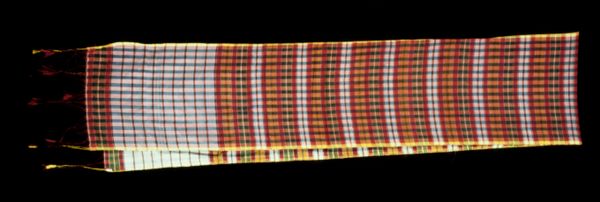
weaving, textile, paper
#
pattern used
#
man-made pattern
#
grid structure
#
weaving
#
textile
#
paper
#
text
#
geometric pattern
#
brick
#
minimal pattern
#
geometric
#
regular pattern
#
4 column grid system
#
islamic-art
#
beaded
#
layered pattern
Dimensions: 387.4 × 7.6 cm (152 1/2 × 3 in.)
Copyright: Public Domain
Curator: This is a ceremonial waist sash, or *ikak pinggang*, woven by the Minangkabau people around the 19th century. You can find it here at the Art Institute of Chicago. Editor: My first impression is that it feels surprisingly contemporary, almost like a minimalist textile design you'd see in a modern boutique. There's a beautiful rhythm to the geometric patterns. Curator: Absolutely. We need to situate this object within its historical and social context. The Minangkabau, known for their matrilineal social structure and rich cultural traditions, are indigenous to the highlands of West Sumatra, Indonesia. Textiles, like this sash, played vital roles in ceremonies and as symbols of status and identity. Editor: I see. So the wearing of this *ikak pinggang* likely conveyed a particular social standing. What more can you tell me about the iconography here? What is being symbolized through weaving? Curator: The geometric patterns you admire aren't arbitrary. They are replete with symbolism, often representing aspects of the natural world and Minangkabau cosmology. It also shows Islamic influences with its geometric qualities and the textile weaving techniques employed, reflective of broader patterns of trade and cultural exchange in the region. Editor: That resonates. Considering its function as a waist sash, it’s fascinating how it literally embodies cultural identity and heritage, acting as a constant visual declaration. Also, observing the way the motifs shift across the piece, one appreciates the craftsmanship in marking social identity and status. Curator: Indeed. Think about the time and skill required to create this intricate weaving. It’s not just a craft; it’s a sophisticated form of visual communication reflecting values. And textiles historically have offered an opportunity to express individuality in a socially appropriate, culturally defined manner. Editor: And it's on display today at a Western museum! One can appreciate the rich legacy but still reckon with the display. Where does it fit into a larger narrative about colonial collecting and the politics of representation? Curator: An important consideration to note. Context matters! We need to question how cultural objects from the past shape how we understand Indonesian societies and reflect more generally the histories of Southeast Asia. Editor: Agreed. It seems that analyzing even an object of this scale and shape leads to very big issues surrounding gender, representation, legacy, and more! Curator: That's the power of historical awareness. Editor: A textile opens an intellectual door!
Comments
No comments
Be the first to comment and join the conversation on the ultimate creative platform.

